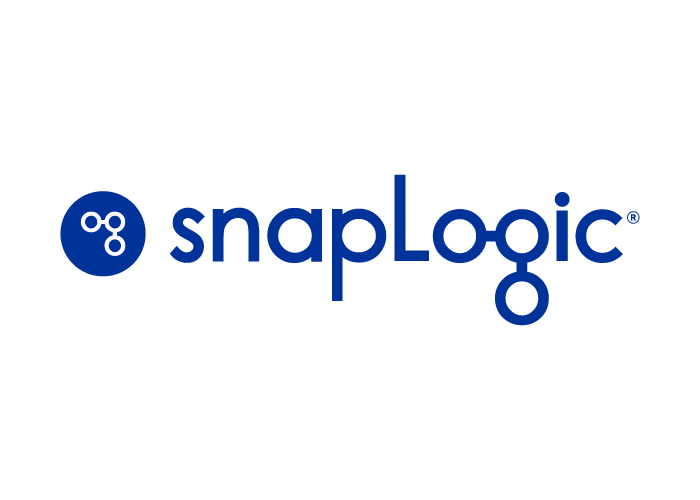Our services
Integration
Software Development
Testing
Other IT Services
Mobile Development
Our technologies
While SnapLogic is a robust integration platform, maximizing its capabilities can be a challenge for businesses without proper guidance and support. This is where our specialized SnapLogic integration services step in to assist.

We are dedicated to offering comprehensive support throughout an entire SnapLogic integration project. Our team is equipped with the expertise and resources to assist you at every step, ensuring a smooth and successful integration experience.
SnapLogic is an excellent choice for integration projects due to several reasons, including:
SnapLogic offers a visual, drag-and-drop interface that allows developers to easily create and configure integrations without the need for complex coding or scripting.
SnapLogic offers a wide range of pre-built connectors and “Snaps” (building blocks of integrations) for connecting to various data sources and applications, as well as the ability to create custom Snaps as needed.
SnapLogic is a unified platform that provides data integration, application integration, API management, and data engineering capabilities. This means that users can complete multiple integration tasks on a single platform, reducing the need for multiple tools.
SnapLogic’s Intelligent Integration Platform uses AI-powered workflows to automate all stages of IT integration projects – design, development, deployment, and maintenance – whether on-premises, in the cloud, or in hybrid environments.
SnapLogic Intelligent Integration Platform can bring several benefits to businesses. Here are some of the key advantages of using SnapLogic:
Similar to other integration platforms, you may face several challenges when using SnapLogic for integration projects. Here are some of the most common issues:
Integrating multiple systems, handling diverse data types, and managing complex data schemas can be challenging in SnapLogic
Although SnapLogic aims to be user-friendly, certain integrations may demand advanced technical knowledge, especially for complex data transformations and custom scripting.
Optimizing data-intensive pipelines for performance can be an intricate task in SnapLogic, and the platform may present unpredictable errors.
While SnapLogic provides error handling capabilities, sometimes the error messages can be vague or insufficient in identifying the root cause of an issue.

With our expertise, you can fast-track your SnapLogic integration project by minimizing the learning curve.
Ensure the integrity and accuracy of your integrated data through best practices and expert guidance provided by our SnapLogic services.
Our team’s deep understanding of SnapLogic’s capabilities enables us to optimize performance and minimize the risk of errors in your integration projects.
With our SnapLogic expertise and own error handling tool, we proactively identify and address potential pitfalls, ensuring smooth and error-free integration processes.
We provide SnapLogic integration services based on our Integration Framework, which is a set of ready-to-use components and processes that can be quickly utilized in any IT integration project.
Our comprehensive approach encompasses technical expertise, effective communication, collaboration, project management, and 24/7/365 support to ensure the success of your SnapLogic integration projects.
integrated systems in one project
integration interfaces in a single project
transactions monthly on one payment rail
max. allowed delay in information propagation
SnapLogic’s robust integration platform holds immense potential, but harnessing it effectively can be a challenge without expert guidance. Our specialized SnapLogic integration services bridge this gap, empowering your business to unlock the full capabilities of SnapLogic and achieve seamless integration success. We have years of experience, dozens of SnapLogic developers, and mature processes. Reach out to us for a proposal!

Let me be your single point of contact and lead you through the cooperation process.
Choose your conversation starter
Signed, sealed, delivered!
Await our messenger pigeon with possible dates for the meet-up.

SnapLogic is a cloud-based Integration Platform as a Service (iPaaS). It lets businesses connect applications, data sources, and APIs in a seamless manner. The platform provides a visual interface and pre-built connectors, known as “Snaps,” that enable users to build complex integrations without writing code. With SnapLogic, organizations can accelerate their digital transformation initiatives by quickly and easily integrating data and applications across their entire IT landscape. SnapLogic also offers advanced data processing capabilities, including data capture, data mapping, data transformation, and data validation, as well as data governance and security features.
IPaaS stands for “Integration Platform as a Service.” A term is used to describe a set of automated tools that integrate data and IT systems that are deployed in different environments, including on-premises and in both public and private clouds.
Typically, an IPaaS platform includes pre-built connectors, business rules, maps, and transformations that facilitate the development of applications and orchestrate integration flows. Moreover, iPaaS providers often offer custom development kits to help their clients modernize legacy applications and add capabilities such as mobile support, integration with social platforms, and business data integration & management.
SnapLogic provides a range of capabilities to help businesses with their data integration needs. Some of its key capabilities include:
SnapLogic has a wide range of potential use cases that can benefit organizations of all sizes and industries. Here are some examples:
SnapLogic Intelligent Integration Platform can bring several benefits to businesses. Here are some of the key advantages of using SnapLogic:
According to the independent study by Forrester Consulting, organizations using the SnapLogic integration platform enjoy the following benefits:
There are 3 separate editions of SnapLogic that you can buy, including:
In SnapLogic technology, Snaplex is the runtime engine that executes data integration tasks. Snaplex provides the processing power and scalability needed to handle data integration workloads of varying sizes and complexity.
Snaplex can be deployed on-premises, in the cloud, or in a hybrid environment, depending on the needs of the business. It can also be deployed in different modes, including ultra, dedicated, and triggered, to support different integration scenarios.
Yes, SnapLogic provides support during development to help businesses build and deploy their integration projects successfully. SnapLogic offers various support options, depending on the edition of the platform and the needs of the business.
Here are some of the support options provided by SnapLogic:
The time it takes to implement SnapLogic can vary depending on a number of factors, such as the complexity of the integration project, the size of the organization, and the level of expertise of the implementation team.
For simple integration projects, it may be possible to implement SnapLogic in a matter of days. SnapLogic provides pre-built connectors and templates for many common systems and applications, which can greatly speed up the integration process.
For more complex integration projects, the implementation timeline may range from several weeks to several months. In these cases, the implementation team will typically work with the organization to identify the data sources and endpoints that need to be integrated, design the data pipelines and workflows, and test and deploy the integrations.
If you need an experienced team of certified SnapLogic integration developers to make modifications or changes to your simple integration projects, or if you want professional and certified SnapLogic consultants to support your more complex integrations, just let us know. We will be happy to help!